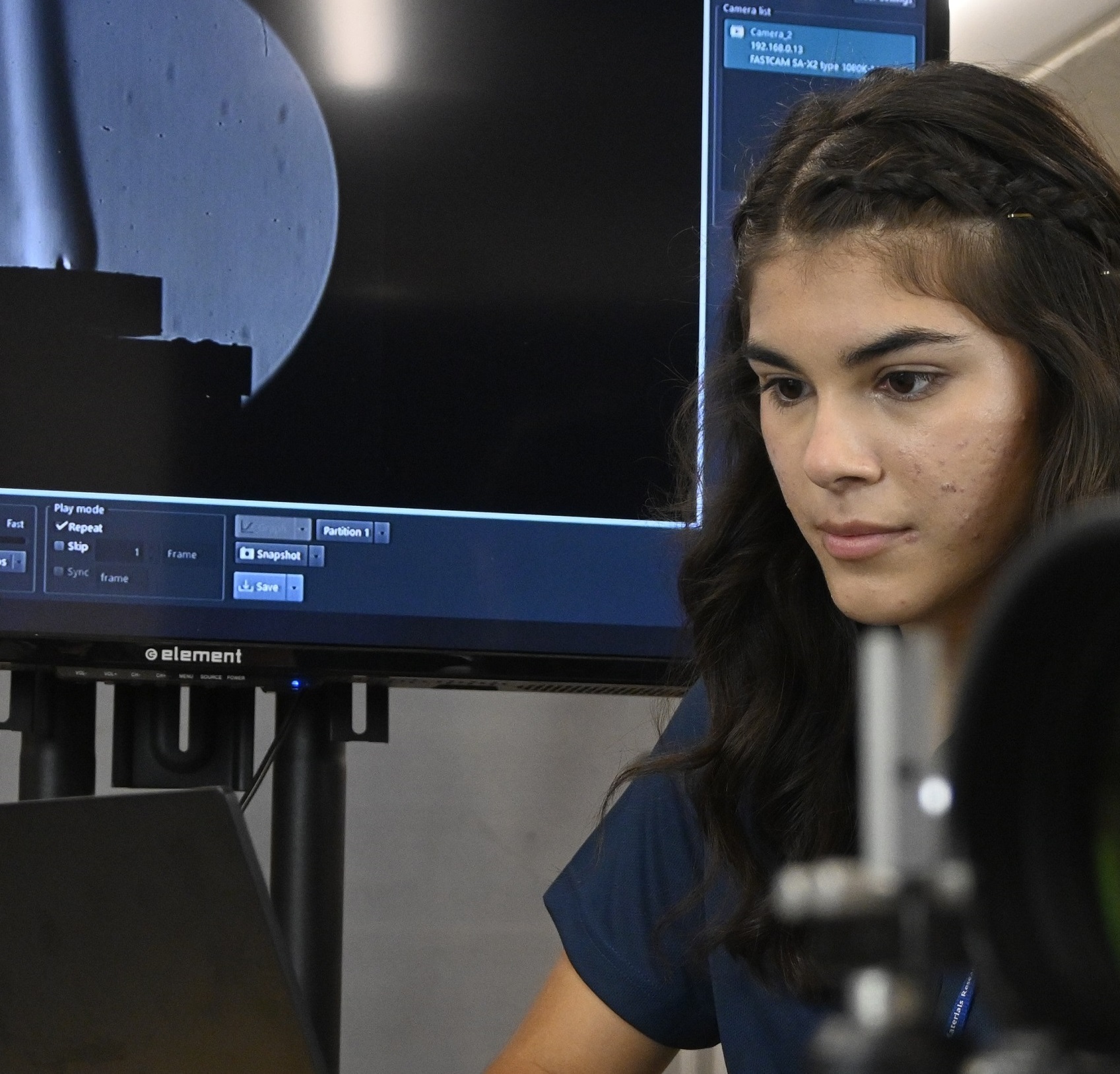Featured Research- Sivana Torres, PMMA Fracture and Propogation
jan 28, 2016
Going to college for an undergraduate degree is a big and sometimes scary commitment. Pursuing a graduate degree can be an even bigger challenge, even just making the decision on whether to go for graduate work can be terrifying. Sivana Torres, a Mechanical Engineering PhD student pushed through this boundary, taking her out-of-the-box thinking and putting it towards her research.
Sivana, a New Mexican native, completed her undergraduate at NMT in Petroleum Engineering. In her last couple years at NMT as an undergraduate student, she took a Thermodynamics class with Dr. Hargather, saying she “really enjoyed the fluids but didn’t realize how broad the applications could be.” This was a foundational moment in her decision for graduate studies.

She decided on staying at NMT for her graduate work because of how different Tech can be from other graduate schools. “New Mexico Tech was a great option for me, the opportunities here are just so much more hands-on than other research schools instead of just all theoretical study. I even get to be more in control of my research, running my own experiments and procedures.” She’s even found that as a female researcher, she’s treated with the same respect and regard as her male counterparts. “I was nervous at first, entering a field that was almost exclusively male but the NMT graduate program has made me feel welcome and apart of the team.”
Sivana even took a different approach to her graduate discipline than most students, she deviated from her undergraduate concentration. “I think it’s important to know that just because you got your undergrad in something does not mean you’re stuck in that box.” Most Petroleum Engineers, if pursuing graduate work, will typically just further their degree in Petroleum Engineering. Sivana decided to pursue her PhD to be in Mechanical Engineering, and despite both being engineering degrees they can have stark differences in education. Yet, Sivana found a way to harmoniously bring together the two disciplines. “I really liked the rock mechanics aspect of Petroleum Engineering but I also really loved the fluids of Mechanical Engineering. My research has been the perfect marrying of the two for me.”
Sivana is currently putting her research towards understanding how PMMA (Polymethyl Methacrylate) fractures and how shock waves propagate through the solid. PMMA is an industrial produced resin, synthesized using the polymerization of Methyl Methacrylate. It’s better known as acrylic or acrylic glass. To study this, she utilized schlieren imaging techniques to watch as the shockwaves spread through the medium.
Schlieren imaging makes use of the fact that light rays bend as they encounter changes in density of a fluid. For schlieren imaging, a setup consisting of a light source (such as a candle or mercury vapor lamp), a slit for the light source to pass through, mirrors to reflect and create parallel light beams that will pass through the testing material, a razor’s edge to focus the beams and then a recording device. Typically schlieren imaging is used with fluids but “it can be used for anything that is optically clear, tracking any variations in pressure, temperature, density that will change the refractive index.”
Sivnana, using both her Petroleum and Mechanical Engineering knowledge, wants to correlate the fracturing of the PMMA to rock mechanics. Rock mechanics is the study of the mechanical behavior of rocks, specifically in response to forces within their physical environment. It applies the concepts of engineer mechanics to rock structures created by mining, fracking or other geolomechanic constructions. She’s looking to apply the knowledge of PMMA fracturing, to hydraulic fracturing (fracking) to see how fractures connect within bedrock when shockwaves are applied.
Sivana, in the future, is looking to bring variance into her experiments. She wants to observe how layers versus no layers within the PMMA impacts the propagation of the shock waves. She’s also looking to apply stress to different layers within the PMMA to see how the fractures differ with respect to the stress. This is all in an effort to mimic the behavior of underground boreholes to see how she can best direct fractures and get them to “talk,” meaning have the fractures connect and interact with each other.
Graduate school can be a daunting decision for many students finishing up their undergraduate degrees. Sivana Torres took the leap and is now getting to pursue hands-on research she’s passionate about. She thinks “everyone should give grad school a chance, I think it’s an amazing opportunity...you should never feel like you’ve been put in a box by your undergrad work, research is limitless.”